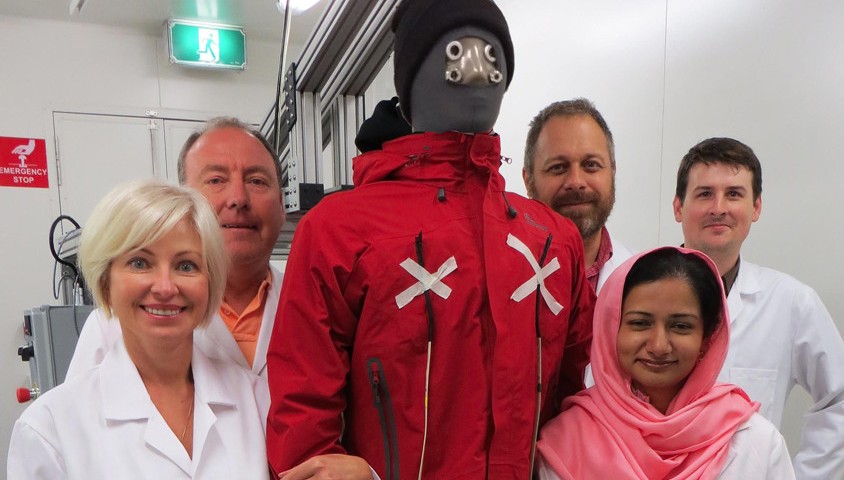Meet Newton, the $250,000 dummy used by RMIT University researchers to trial the latest, most sophisticated fabrics and designs in performance apparel.
Known as a ‘Sweating Thermal Manikin’, Newton is designed to mimic basic human physiological reactions in a variety of temperatures so that RMIT’s School of Fashion and Textiles personnel can measure the various factors that make outdoor garments so useful.
Associate professor Olga Troynikov is performance and sport apparel research leader at the School of Fashion and Textiles, and she believes that it is innovations like Newton that will help drive much greater advances in the clothing we wear.
“Outdoor performance wear is already harder wearing and more rugged than it was 20 years ago,” Troynikov said. “However the most important developments in recent years have been made in increasing factors such as flexibility, functionality and in thermal performance of winter garments’ warmth-to-weight and warmth-to-volume ratios.”
Troynikov highlights the sheer size of some outdoor garments – such as outer jackets – that have been reduced in bulk, weight and the number of layers while still providing the same warmth and comfort.
While some manufacturers will debate the relative virtues of synthetics versus natural fibers, Troynikov sees the greatest promise in composite textiles that include the best of both materials.
“We’ve done a lot of research on wool as it has some very unique warmth properties, as well as being able to work with the wearer to provide dynamic conform properties such as warmth and moisture management. For example, in stop-go activities such as skiing, wool remains warm and breathable without causing the wearer to overheat when skiing and helps them avoid the cold when sitting in a chair lift without active movement.
“Meanwhile, some synthetic materials have clear advantages over natural equivalents, such as their durability, strength, drying times and in some cases price. The ideal performance apparel will therefore include a well-designed mixture of both natural and synthetic elements.”
It is the ability of some fabrics to passively adapt themselves to the needs of the wearer that are of particular interest in future textile and performance clothing research and development. While wool is able to achieve this better than synthetics, Troynikov predicts a future where garments are actively able to become more warming or cooling depending on the ambient temperature, and the microclimate between the skin of the wearer and the fabric of the garment.
“Temperature regulation, self cleaning and even self-repair will soon be made possible with smart textiles. The research is now focusing where smart textile materials replace electronic components as they will be able to sense the temperature, humidity and the wearer’s bio attributes by themselves, so that the sensing will be seamlessly integrated through knitting or weaving into garments themselves without electronics.,” she explained. “They will therefore require a power source, and this technology is also being developed with researchers focusing on self-powered textile sensors, and also those that are able to generate energy from body heat, movement or sunlight.”
It is Troynikov’s aim to eventually develop clothing that can be truly multipurpose; outerwear that’s rugged enough for climbing, warm enough for skiing and still presentable enough to wear into the office, for example for city cycling or bike commuters.
“Technologies such as Newton will help us achieve this,” she said. “By allowing us to test all the properties of a garment, as well as mapping individual garment sections to the wearer’s corresponding body parts, we can tell whether something not only performs, but feels comfortable enough to wear in any situation.”


